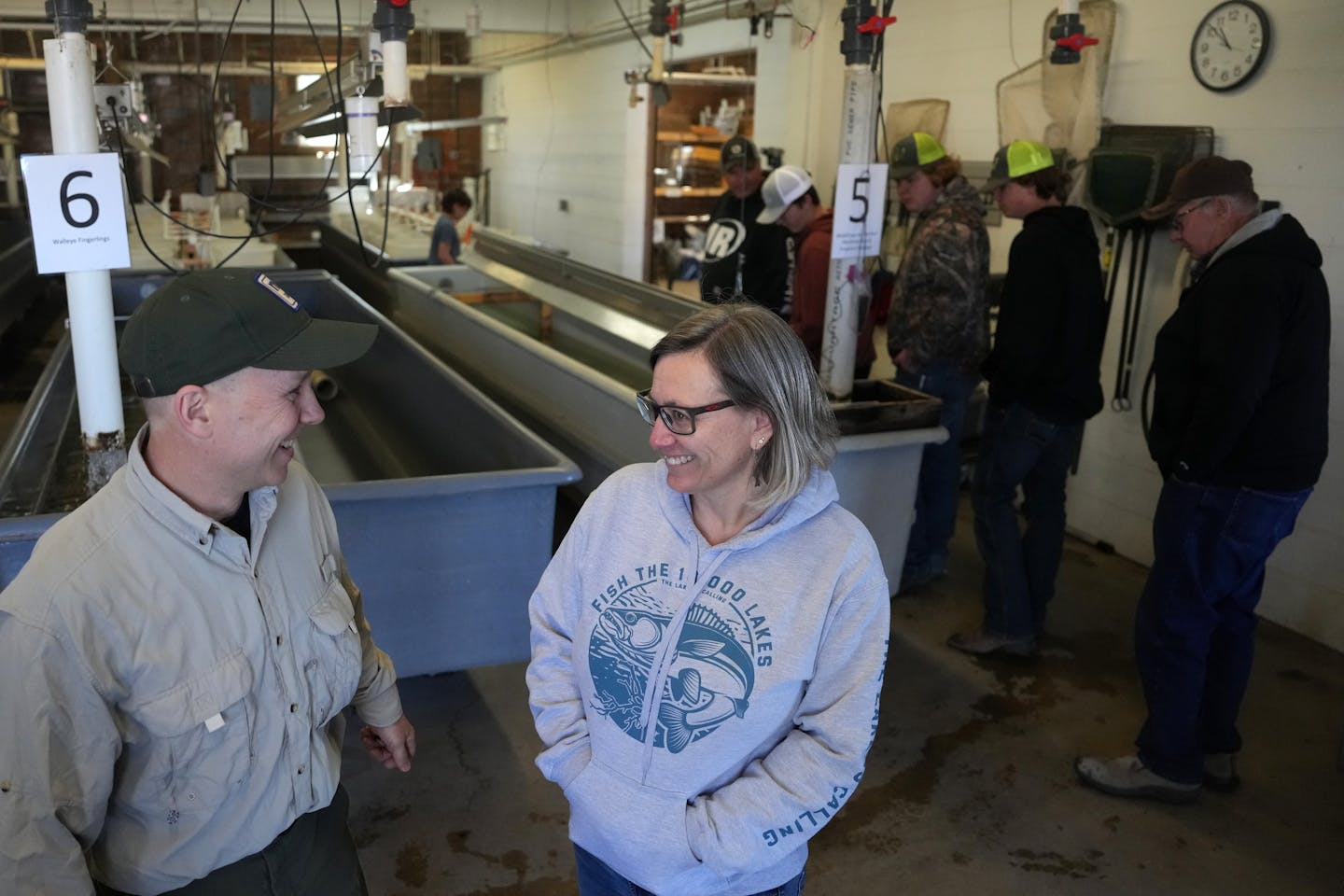 See
more of the story
See
more of the story
Craig Soupir has $20 million to spend, and wants to do it right.
In fact, the money isn't Soupir's, and he alone isn't responsible for ensuring the Department of Natural Resources builds the best fish hatchery $20 million can buy.
But it's safe to say no one is more excited than Soupir, the DNR's area fisheries supervisor in Waterville, Minn., about the prospect of replacing the ancient (built in 1954) hatchery in that southern Minnesota town of about 1,800 residents.
"Being able to build a new hatchery is a big deal for the state, considering how important stocking is to fishing in Minnesota," Soupir said. "With the new hatchery, we hope to increase our production capacity in Waterville by about 150 percent."
The DNR staff and various angler groups have sought a new Waterville hatchery for decades. But it wasn't until the last legislative session, when the DNR was awarded more than $300 million to update many of its facilities, including its Waterville hatchery, that a funding breakthrough was reached.
Leading the charge was the angler group Minnesota Sportfishing Foundation Coalition (MN-FISH), which helped to convince legislators and Gov. Tim Walz the time had come to replace a hatchery that originated as, and generally has remained, a garage.
The Waterville hatchery is among 11 DNR cool- or warm-water facilities in the state that produce channel catfish, northern pike and muskies, in addition to walleyes, for stocking in 1,100 lakes and a smattering of streams.
Others are in Walker Lake, Bemidji, Brainerd, Detroit Lakes, Glenwood, Grand Rapids, New London, Park Rapids, St. Paul and Tower.
"Cold-water" hatcheries, meanwhile, in Altura, Lanesboro, Peterson and Remer, produce 1.7 million brook, brown, lake and rainbow trout each year, as well as splake (a brook and lake trout hybrid) for stocking in 200 Minnesota lakes and 100 streams.
Raising fish for stocking can be challenging in a "north-south" state like Minnesota, in which lake types in the bottom half of the state differ from those "up north."
Walleyes in southern Minnesota, for example, frequently don't reproduce naturally. If fishing opportunities are going to exist in those waters, they have to originate from stocking.
Conversely, in northern Minnesota, many lakes don't need walleye stocking. It would be a waste of money, because those lakes facilitate natural reproduction far exceeding anything stocking could provide.
Another consideration in fish stocking is the amount of "biomass," or life, a given lake can support. Stocking fish beyond this demarcation, which often has to be guessed at, can be counterproductive.
Additionally, survival rates of stocked "fry," or tiny infant fish, often vary widely from those of "fingerlings" (fry raised in hatcheries to the fall of their birth year) or yearlings, which as their name implies are older, bigger and more likely to survive but considerably more expensive to produce.
Another fish-rearing consideration, "biosecurity," weighs on Soupir as he and others in the DNR prepare to choose engineering and construction firms for a Waterville hatchery that likely will serve Minnesota for at least a half-century.
"Biosecurity is critical," Soupir said. "Keeping invasive species and fish diseases out of a hatchery has become more and more important. Being able to control the new hatchery's water temperature and ensuring the water is pure will help in that regard."
About 1 million northern pike fry, 60 million walleye fry and 120,000 muskie fry are now produced annually in Waterville, some of which remain in the hatchery until fall, when they are stocked as fingerlings.
Of these, muskies are an example of a stocked fish that gained a lot of traction among anglers, but whose sizes and numbers have changed as its populations have matured. Thirty years ago, give or take, an early morning or late evening spent casting on lakes such as White Bear, Bald Eagle, Forest, Minnetonka or Mille Lacs likely would have yielded a few muskie follows and perhaps a hookup.
But muskie populations those many years ago generally comprised smaller individuals than they do today.
"As the size structure of muskies has shifted to larger individuals, and fewer of them, we're finding that muskie stocking is less successful," Soupir said. "That's why we want to produce more yearling muskies for stocking, believing we can stock fewer, but bigger, fish that have a much better chance for survival."
DNR fisheries researchers also have discovered that Minnesota walleyes differ genetically from north to south.
Eggs stripped from Cannon River walleyes in southern Minnesota, for instance, can vary from those taken up north, which explains why the Waterville hatchery produces walleye fry and fingerings primarily from Cannon River stock.
Soupir, a 25-year DNR veteran, has toured other states' hatcheries in the year since the Legislature approved the $24 million, gleaning features that should be incorporated in Minnesota's newest facility.
"Right now, we have water come into our facility and water go out," he said. "With new technologies, we will be able to recirculate 98% of our water, which among other things will allow us to raise fish year-round. This will potentially get our muskie growth up to 16 inches by the following spring, and also help us produce better walleyes more consistently."
Selection of a hatchery engineering firm is expected within the next nine months, with groundbreaking slated for spring 2026.
"I'm hoping also we can have an observation room so the public can visit to see how a hatchery works," said Soupir, who with staff welcomed about 150 people during an open house Wednesday. "We want anglers and the public to see what we're doing. We're working hard to support the state's fisheries."









